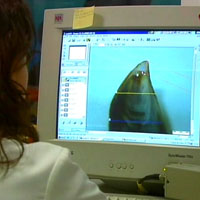Technology Platforms still going strong, finds third status report
European Technology Platforms (ETPs) have brought together stakeholders and have defined common and ambitious strategic research agendas (SRAs). The challenge is now to align national, regional and international activities with the SRA priorities, claims the third status report on ETPs. 'The last three years have shown an impressive build-up of momentum on the side of ETPs, and with the launch of FP7 [the Seventh Framework Programme] a major milestone has been achieved. There is no time for complacency, but a need to address the challenges ahead and keep the momentum alive,' reads the report. There are currently 31 ETPs in existence, spanning a range of technologies deemed key to Europe's growth and competitiveness. All have been established within the last four years. The ETPs' objective is to influence industrial and research policy at EU, national and regional level, while encouraging public and private investments in research and development (R&D) in key technological areas. A look at the research priorities in FP7 suggests that the ETPs have indeed managed to influence policy. 'In some cases, a clear correspondence can be established between the content of an SRA and the priorities set out in the relevant theme of the 'Cooperation' SP [specific programme],' states the report. The Commission believes that there are in fact 70 cases in which one of the SRAs is directly relevant to one of the Cooperation themes. Moreover, almost all of the SRAs are addressed either fully or broadly by at least one of the specific programme themes. The ETPs are encouraged to apply for funding, along with other research teams, through FP7, but are also invited to look elsewhere. Possible sources of funding include the newly developed Risk-Sharing Finance Facility (RSFF), national and regional initiatives, international initiatives such as EUREKA, and the EU's Structural Funds. The report states that the use of Structural Funds for innovation-related projects will increase as innovation becomes a priority for cohesion policy. 'The Commission will ensure that the new Structural Funds programmes reflect the increased emphasis on innovation, both in terms of strategy and financial allocations, in compliance with the Lisbon Strategy,' writes the Commission. Throughout 2006, a number of Member States began to establish 'Mirror Groups' to the ETPs. The groups are normally composed of experts nominated by the Member States, and aim to facilitate coordination and provide an effective two-way interface between ETPs and complementary activities at national level. National platforms have also continued to emerge. The Commission is also expecting new ideas for potential ETPs to be put forward, especially as FP7 progresses and the concept becomes better known by industry, researchers and other stakeholders. However, the aim should not to be to create as many ETPs as possible. 'Some topics, whilst of clear importance, may not justify the setting up of a dedicated ETP, either because they may overlap with existing platforms, or remain vague in concept or address issues which are more horizontal in nature,' states the report. Indeed, it would be 'counterproductive to encourage a proliferation of ETPs, contrary to their very objective of improving coordination in the currently fragmented research landscape in Europe.'



